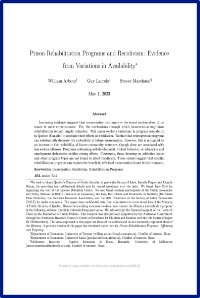Edited by Janet Weston and Virginia Berridge
This Witness Seminar, held at the London School of Hygiene and Tropical Medicine in May 2017, brings together some of those involved in influencing and implementing prison policy decisions surrounding HIV and AIDS in the 1980s and 1990s. AIDS first appeared in Europe in the early 1980s, and prisons were soon identified as sites that would face particular challenges. Injecting drug use was one of the primary modes of HIV transmission, and the large numbers of drug users passing through prisons meant that the prevalence of HIV was feared to be high. Added to this were suspicions about the frequency of risky sexual activity and injecting drug use within prisons. Prisoners were not only thought to be at a higher risk of already having HIV or AIDS, but prisons themselves were seen as an ideal environment for the spread of infection amongst inmates, potentially also from inmates to staff, and ultimately from released prisoners to the wider population. Urgent decisions had to be made about how to minimise disruptions prompted by diagnoses or fears of HIV and AIDS, how to reduce the risks of HIV transmission, and how to look after prisoners already affected. The emergence of HIV and AIDS highlighted many of the existing tensions and problems surrounding healthcare for prisoners. Witnesses described the reluctance of the prison service to acknowledge and tackle difficult issues, but also observed that there did not seem to have been an HIV or AIDS epidemic within prisons in England and Wales. What also emerged was a sense of some of the ongoing difficulties facing the prison service, in terms of lost gains in healthcare services, mounting overcrowding, and a failure to learn the lessons of the past.
London: London School of Hygiene & Tropical Medicine, 2017. 67p.





















